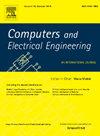利用组件的自我进化策略实现动态异构冗余
IF 4
3区 计算机科学
Q1 COMPUTER SCIENCE, HARDWARE & ARCHITECTURE
引用次数: 0
摘要
网络安全形势日益严峻。防火墙和入侵检测系统等传统安全设备由于其被动性,无法防范未知风险。动态异构冗余(DHR)通过切换攻击面、迷惑攻击者来主动防御,成为现代网络防御的重要手段。然而,由于资源限制,现有的基于调度算法的 DHR 方法在高强度攻击下难以奏效。为了克服这一弱点,我们提出了遗传算法和粒子群优化(GAPSO)这一新型 DHR 架构。GAPSO 提供主机组件的实时安全意识,映射潜在的攻击路径,并计算每个组件的风险概率。在攻击过程中,高风险组件会演化成池中的其他组件。实验表明,与基于调度的 DHR 相比,GAPSO 能显著降低系统风险,并有效延缓黑客的攻击周期。此外,我们还开发了一个原型系统,并在真实网络环境中进行了评估,取得了积极的成果。本文章由计算机程序翻译,如有差异,请以英文原文为准。
Exploiting self-evolutionary strategies of components for Dynamic Heterogeneous Redundancy
The network security situation is increasingly serious. Traditional security equipment like firewalls and intrusion detection systems cannot prevent unknown risks due to their passive nature. Dynamic Heterogeneous Redundancy (DHR) actively defends by switching the attack surface and confusing attackers, becoming essential in modern network defense. However, existing DHR approaches based on scheduling algorithms struggle under high-intensity attacks due to resource limitations. To overcome this weakness, we propose a Genetic Algorithm and Particle Swarm Optimization (GAPSO), a novel DHR architecture. GAPSO provides real-time security awareness of host components, maps potential attacker paths, and calculates the risk probability of each component. High-risk components evolve into others in the pool during attacks. Experiments show that GAPSO significantly reduces system risk compared to scheduling-based DHR and effectively delays the hacker’s attack lifecycle. Additionally, we developed a prototype system and evaluated it in a real network environment, obtaining positive results.
求助全文
通过发布文献求助,成功后即可免费获取论文全文。
去求助
来源期刊

Computers & Electrical Engineering
工程技术-工程:电子与电气
CiteScore
9.20
自引率
7.00%
发文量
661
审稿时长
47 days
期刊介绍:
The impact of computers has nowhere been more revolutionary than in electrical engineering. The design, analysis, and operation of electrical and electronic systems are now dominated by computers, a transformation that has been motivated by the natural ease of interface between computers and electrical systems, and the promise of spectacular improvements in speed and efficiency.
Published since 1973, Computers & Electrical Engineering provides rapid publication of topical research into the integration of computer technology and computational techniques with electrical and electronic systems. The journal publishes papers featuring novel implementations of computers and computational techniques in areas like signal and image processing, high-performance computing, parallel processing, and communications. Special attention will be paid to papers describing innovative architectures, algorithms, and software tools.
 求助内容:
求助内容: 应助结果提醒方式:
应助结果提醒方式:


